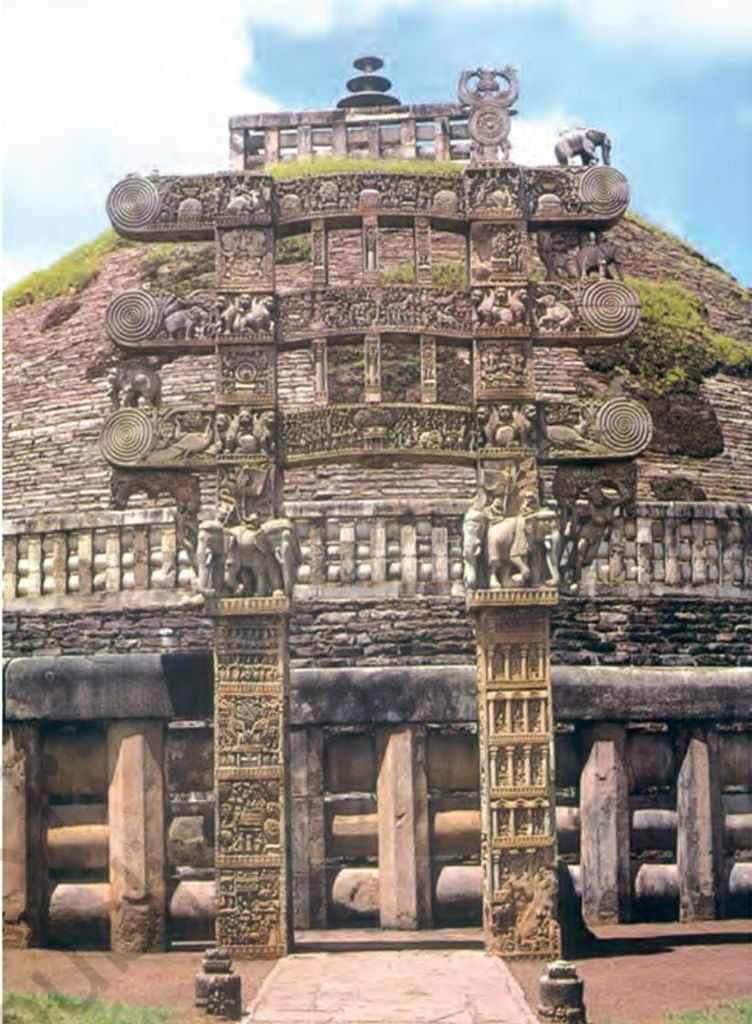Iron pillar, stupas and buildings of stones and bricks
The Iron Pillar

The iron pillar at Mehrauli, Delhi, is a perfect example of the skill of Indian crafts persons. It is made of iron, it’s height is 7.2. m, and weighs over 3 tonnes. You will be amazed to know that the pillar has not rusted in all these years.
Building of bricks and stones

This box, is known as a relic casket, laid deep beneath the earth. Later, a layer of mud brick or baked brick was added on its top. The dome like structure was sometimes covered with carved stone slabs. A path, known as the pradakshina patha, was laid around the stupa. This was surrounded with railings. Entrance to the path was through gateways. Devotees walked around the stupa, in a clockwise direction, as a mark of devotion. Both railings and gateways were often decorated with sculpture. Some of the earliest Hindu temples were also built at this time. Deities such as Vishnu, Shiva, and Durga were worshipped in these shrines. The most important part of the temple was the room known as the garbhagriha, where the image of the chief deity was placed. It was here that priests performed religious rituals, and devotees offered worship to the deity.
At Bhitargaon, a tower, known as the shikhara, was built on top of the garbhagriha, building shikharas required careful planning. Most temples also had a space known as the mandapa. It was a hall where people could assemble.
How were stupas and temples built?
Often, kings or queens decided to build these as it was an expensive affair There were several stages in building a stupa or a temple.
- First, good quality stone had to be found, quarried, and transported to the place where the building has to be built.
- Rough blocks of stone had to be shaped and carved into pillars, and panels for walls, floors and ceilings.
- Then these had to be placed right position.
Kings and queens spent lots of money on the crafts persons who worked hard to build these splendid structures. Even the devotees who visit the temple or the stupa, brought gifts, which were used to decorate the buildings. For example, an association of ivory workers paid for one of the beautiful gateways at Sanchi. Even the merchants, farmers, garland makers, perfumers, smiths, and hundreds of people paid for the decoration.

 Indira Gandhi Memorial High School
Indira Gandhi Memorial High School
